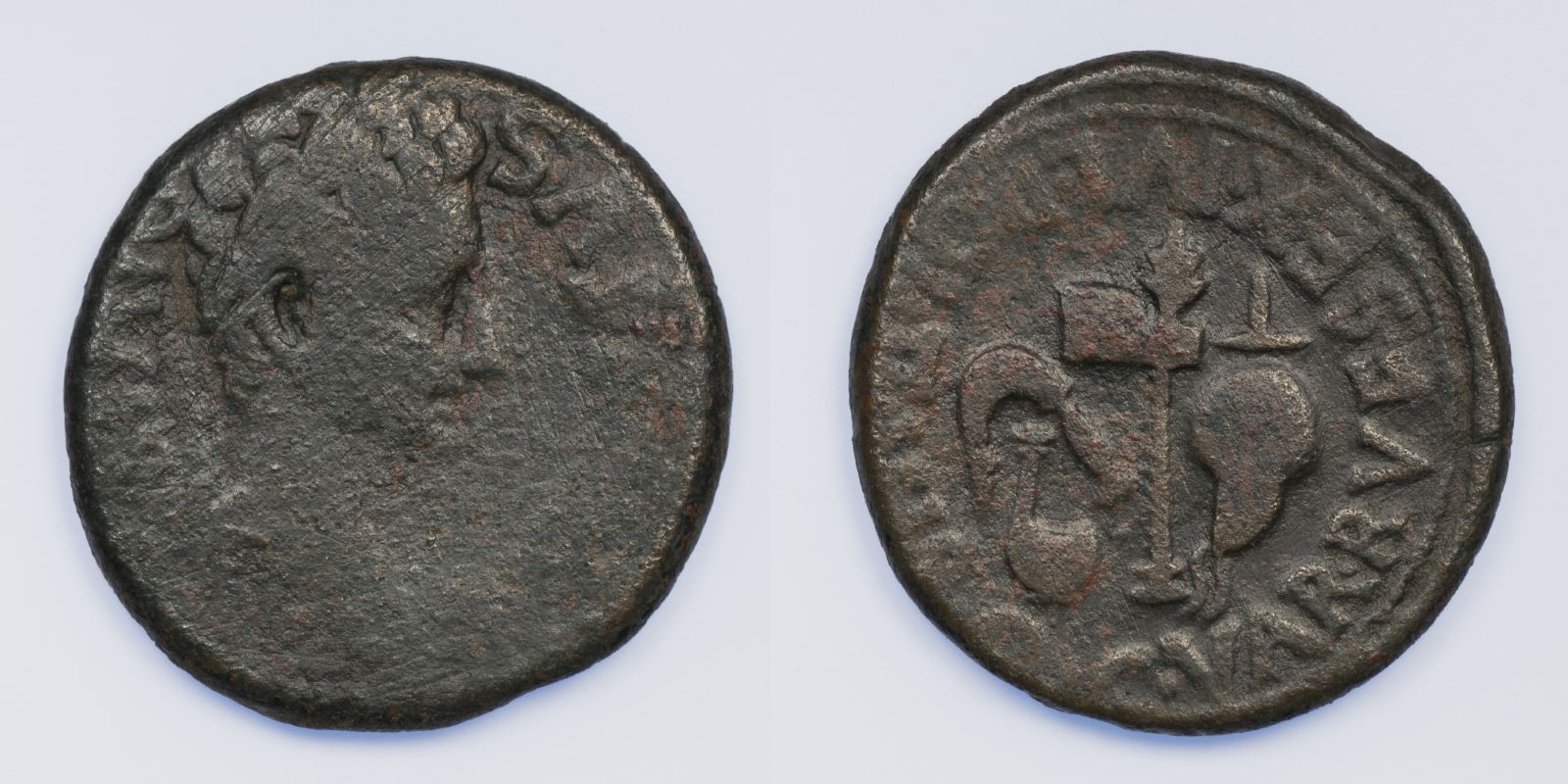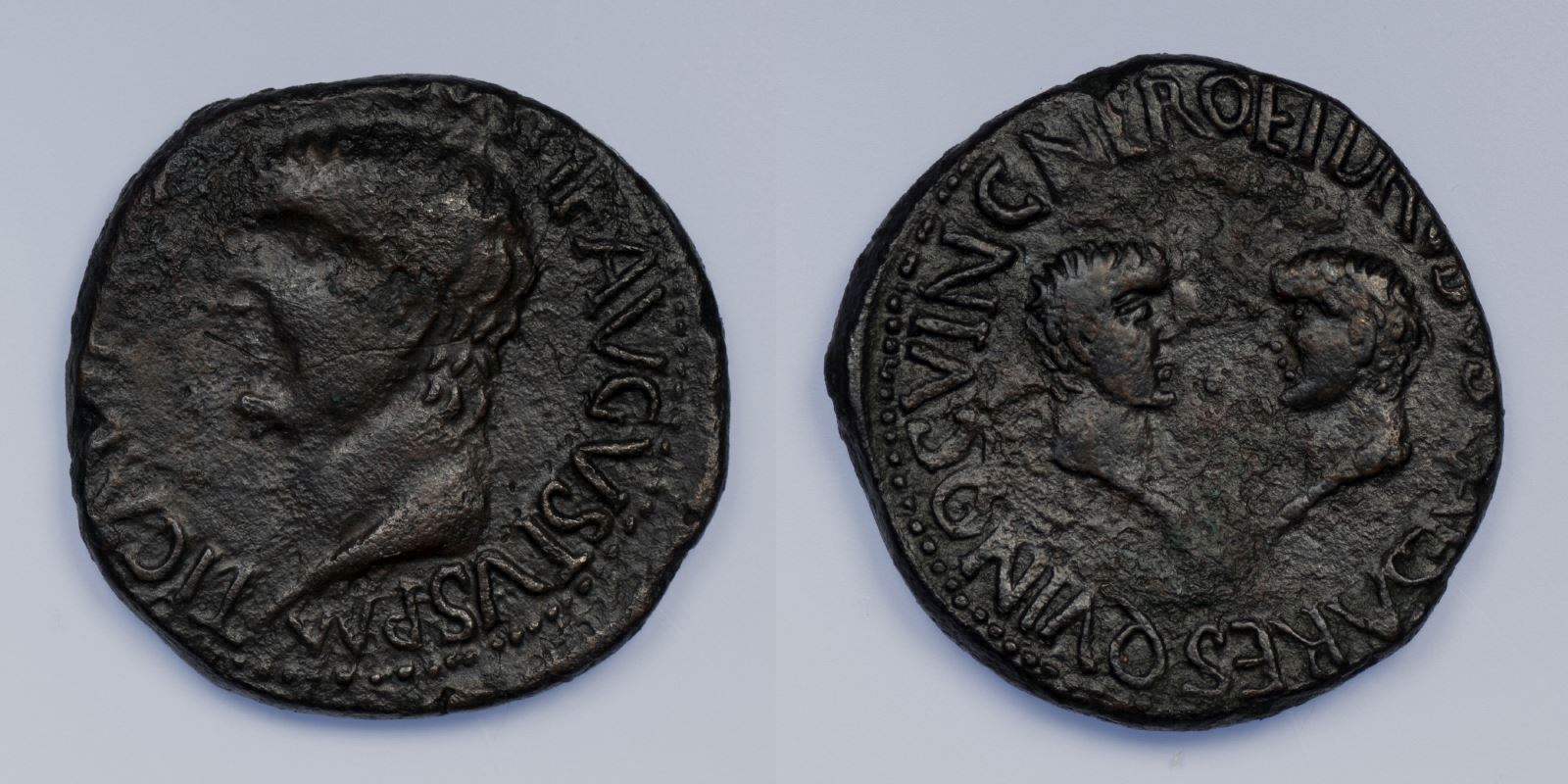Carthago Nova was originally named Mastia, but was re-founded in 228 BC as Qart Hadasht ("New City"), identically named to Carthage, for the purpose of serving as a stepping-off point for the conquest of Spain.
The Roman general Scipio Africanus conquered it in 209 BC and renamed it as Carthago Nova (literally "New New City") to distinguish it from the mother city.
The city was very relevant both in the Carthaginian and the Roman conquest of the Iberian Peninsula. It remained important until it was sacked by the Vandals in 435 AD.
The Roman general Scipio Africanus conquered it in 209 BC and renamed it as Carthago Nova (literally "New New City") to distinguish it from the mother city.
The city was very relevant both in the Carthaginian and the Roman conquest of the Iberian Peninsula. It remained important until it was sacked by the Vandals in 435 AD.
Modern location: Cartagena, Spain
(1)
Augustus
.jpg)
An
AE
As
struck 27 BC-14 AD
in
Carthago Nova
Obverse: AVGVSTVS DIVI F, Head of Augustus facing right, wearing laurel wreath
Reverse: M POSTVM ALBIN L PORC CAPIT II VIR Q, Priest standing facing, holding simpulum and branch
Diameter:
28 mm
Die Orientation: 8 H
Weight: 14.94 g
Die Orientation: 8 H
Weight: 14.94 g
Marcus Postumius Albinus and Lucius Porcius Capito as duumviri quinquennales (Two magistrates in charge of the colony for a term of 5 years)
The obverse inscription translates to "Augustus, son of the Divine (referring to Julius Caesar)"
The reverse translates to "Marcus Postumius Albinus, Lucius Porcius Capito, Two men for a 5 year term"
The obverse inscription translates to "Augustus, son of the Divine (referring to Julius Caesar)"
The reverse translates to "Marcus Postumius Albinus, Lucius Porcius Capito, Two men for a 5 year term"
RPC I 170
(2)
Augustus

An
AE
unit
struck 27 BC-14 AD
in
Carthago Nova
Obverse: AVGVSTVS DIVI F, Head of Augustus facing right, wearing laurel wreath
Reverse: C VAR RVF SEX IVL POL II VIRQ, Simpulum, aspergillum, securis, and apex
Diameter:
28 mm
Die Orientation: 5 H
Weight: 13.92 g
Die Orientation: 5 H
Weight: 13.92 g
Gaius Varius Rufus and Sextus Julius Pollio. as magistrates in charge of the colony for a five year term
RPC I 167
(3)
Tiberius

An
AE
As
struck 23-29 AD
in
Carthago Nova
Obverse: TI CAESAR DIVI AVGVSTI F AVGVSTVS P M, Bare head of Tiberius facing left
Reverse: NERO ET DRVSVS CAESARES QVINQ C V I N C, Confronting bare heads of Nero and Drusus
Diameter:
29 mm
Die Orientation: 4 H
Weight: 15.23 g
Die Orientation: 4 H
Weight: 15.23 g
RPC doesn't commit to a date beyond the range of Tiberius' reign, but common sense tells us it can be narrowed down quite a bit, clearly it would come about after his son Drusus passed and it would stop being struck after the boys turned out to be garbage. Several auction houses go with this dating of 23-29 AD.
The heads on the reverse are Nero Julius Caesar and Drusus Caesar, both sons of Germanicus, and adopted sons of Tiberius. Tiberius made it apparent that they were to succeed him, since his natural son "Drusus Julius Caesar" had died in 23 AD. History had other plans in mind of course.
The reverse translates to " Nero and Drusus, Caesars, Quinquennial (Duumvirs) of the Victorious Colony Julia Nova Carthago"
The heads on the reverse are Nero Julius Caesar and Drusus Caesar, both sons of Germanicus, and adopted sons of Tiberius. Tiberius made it apparent that they were to succeed him, since his natural son "Drusus Julius Caesar" had died in 23 AD. History had other plans in mind of course.
The reverse translates to " Nero and Drusus, Caesars, Quinquennial (Duumvirs) of the Victorious Colony Julia Nova Carthago"
RPC I 179
